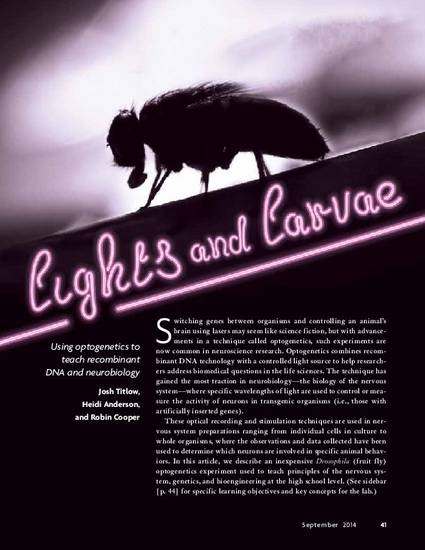
Switching genes between organisms and controlling an animal’s brain using lasers may seem like science fiction, but with advancements in a technique called optogenetics, such experiments are now common in neuroscience research. Optogenetics combines recombinant DNA technology with a controlled light source to help researchers address biomedical questions in the life sciences. The technique has gained the most traction in neurobiology—the biology of the nervous system—where specific wavelengths of light are used to control or measure the activity of neurons in transgenic organisms (i.e., those with artificially inserted genes).
These optical recording and stimulation techniques are used in nervous system preparations ranging from individual cells in culture to whole organisms, where the observations and data collected have been used to determine which neurons are involved in specific animal behaviors. In this article, we describe an inexpensive Drosophila (fruit fly) optogenetics experiment used to teach principles of the nervous system, genetics, and bioengineering at the high school level.
Available at: http://works.bepress.com/robin_cooper/95/

Published in The Science Teacher, v. 81, no. 6, p. 41-47.
The copyright holder has granted the permission for posting the article here.
A related video is embedded below.